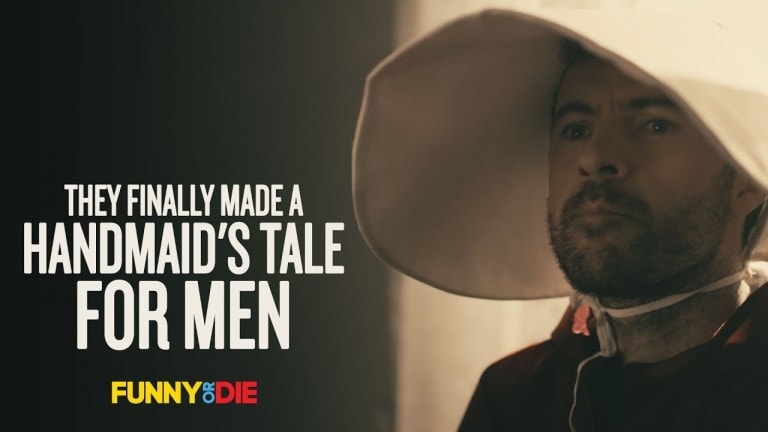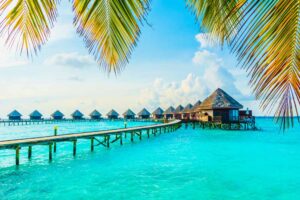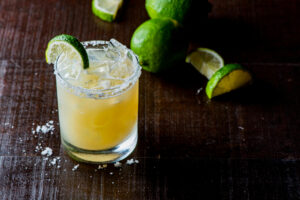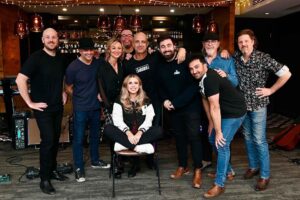Chilling in Uruguay: Why You Should Visit the ‘Switzerland’ of South America
Looking to spend your holiday dime in a sparsely populated country with white sand beaches, a booming wine industry, and progressive social values? Then look no further than the emerald state of Uruguay. Nestled between the two largest countries in South America, Uruguay lies south of Brazil and east of Argentina with just over three million inhabitants.
Considered the second smallest country on the continent next to Suriname, it boasts a heartland of fertile plains and rolling hills as well as a spectacular coastline dotted with art colonies, windswept beaches and quaint fishing villages. Spanish is the official language of Uruguay, though towards the border of Brazil some inhabitants speak Portuñhol, a combination of Spanish and Portuguese.
Our one-week adventure through Uruguay began with a simple ferry ride across the River Plate from Buenos Aires to Colonia de Sacramento on the Colonia Express. A charming, old port and World Heritage Site, Colonia was formerly established by the Portuguese in 1680. We stayed in Barrio Historico which allowed us to easily stroll through century-old buildings on cobblestone streets decorated with bright bougainvillea and purple hydrangeas. Don’t miss the Basilica del Sagrado Sacramento or the occasional vintage car parked around the corner!
Practical Note: Renting a car is easy in Uruguay and much more efficient than trying to conquer Uruguay in a week by bus. We used PuntaCar company and dropped it in Montevideo at the end of our trip without a problem. The roads are safe and there is a zero-tolerance drunk driving policy. Uruguay uses roundabouts for the most part and the roads are in very good condition.
Table of Contents
ToggleEstancias
There are several types of estancias throughout Uruguay depending on what you want to experience. My travel partner and I opted for a more ‘roots’ experience rather than a hotel-resort property.
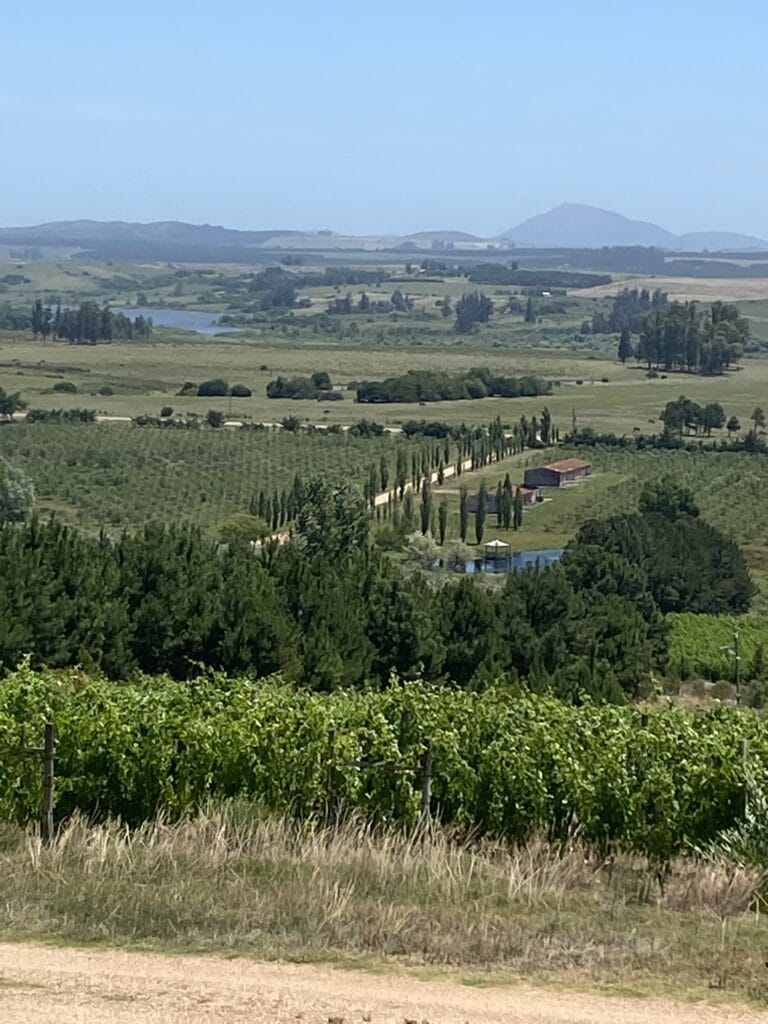
Heading northwest to El Ceibo estancia owned by Joselo and Carmen Passarella, we spent three hours passing gentle rolling hills and green pastures with the occasional wall of pine and eucalyptus trees.

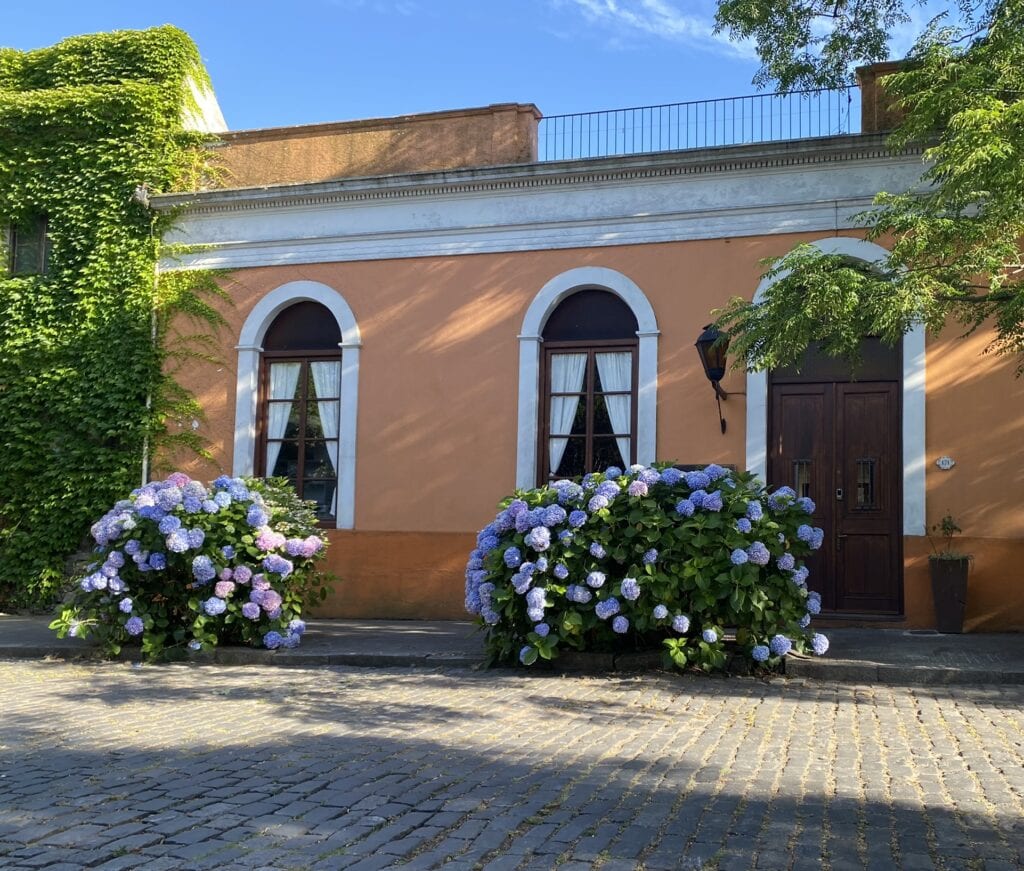
Imported to both shade livestock and block the wind, they also provide home to several species of birds. One in particular is the Monk Parakeet, a green parrot which you will see and hear throughout your journey but it is considered an agricultural pest.
We also sighted Lapwings, the national bird of Uruguay, fork-tailed flycatchers, and greater rheas while horse-back riding across Joselo’s estancia. A true gaucho (cowboy), Joselo’s family has owned El Ceibo since 1849 and manages 400 sheep as well as farms acres of corn.
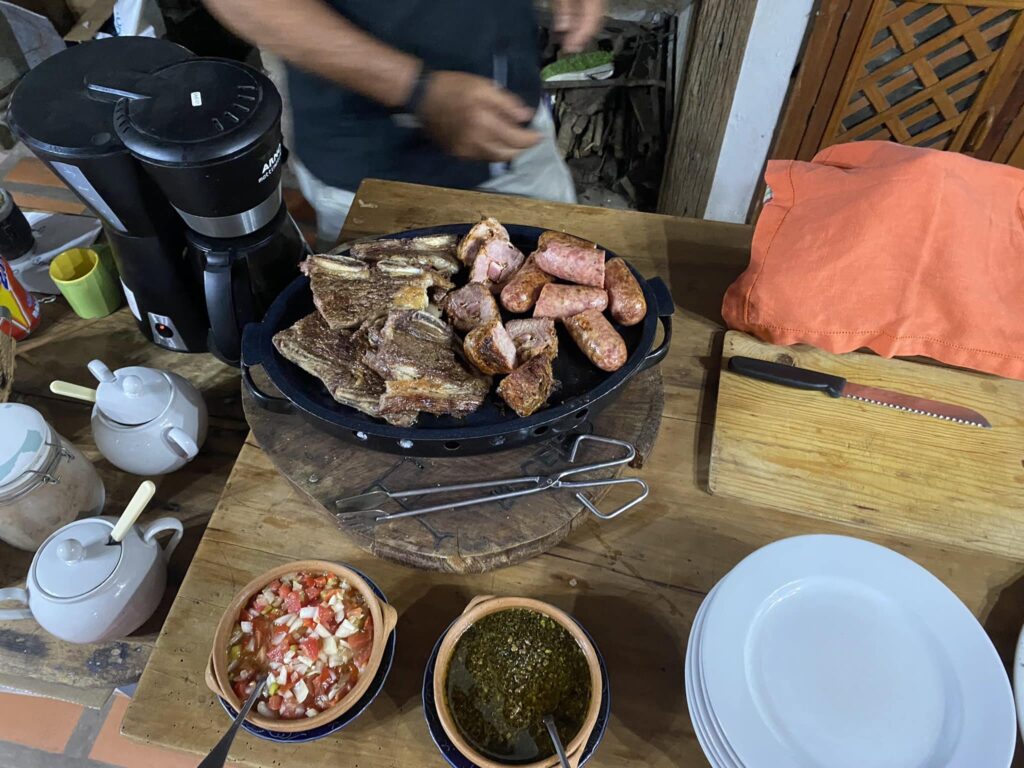
A home cooked meal took on a whole new meaning when Joselo fired up the parrilla, or grill using coals or wood embers. As the sun set and temperature dropped, we feasted on a grilled variety of meat cuts and sausages with fresh chimichurri sauce and homemade honey liquor distilled from his beehives.
Wine
Heading out of the interior and to the coast, we made a stop at one of the more than 180 wineries across the country. The majority of wineries have popped up in Canelones in the southern part of Uruguay due to weather and terroir, and it’s a day trip from Montevideo.
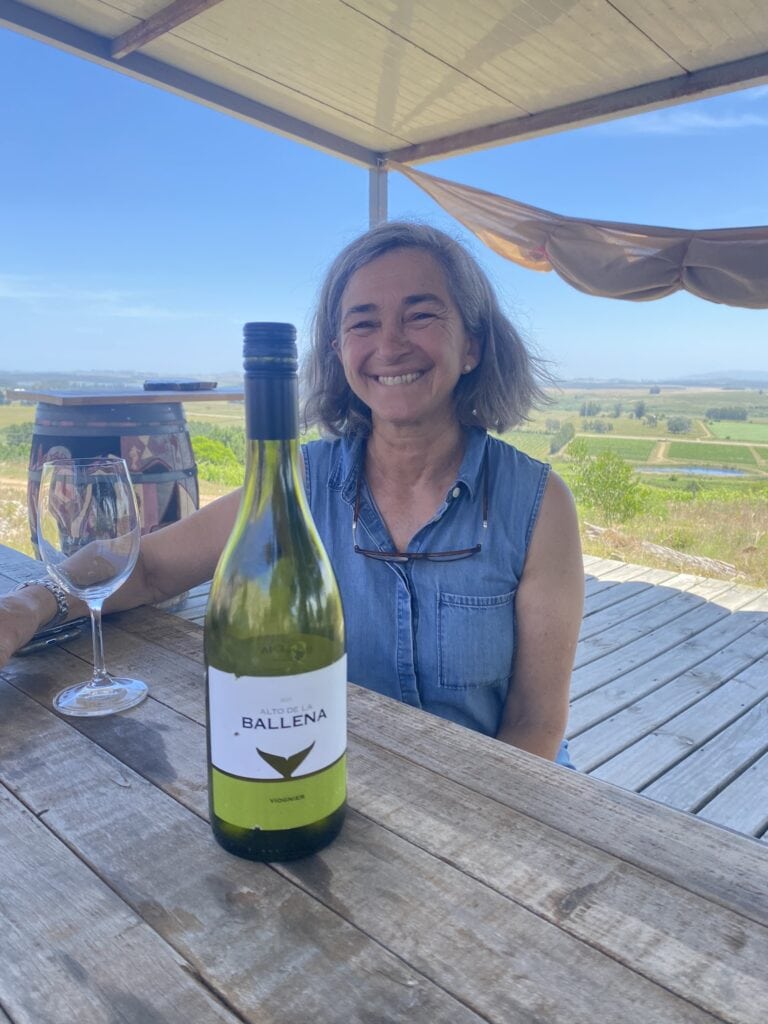
While sipping a chilled, tropical Viognier at Alto de la Ballena winery in Maldonado, Paula, detailed how she and her husband, Alvaro, traded life in the big city for a venture into the burgeoning wine industry now taking over Uruguay. Alto de la Ballena’s scenic vineyards stretch down a hillside with Laguna de Sauce to the south. Coastal breezes blow in cooling the Tannat (Uruguay’s signature grape) as well Cabernet Franc, Syrah, Tempranillo and Merlot. We came away with a Tannat-Cabernet Franc blend bursting with plum, blackberries and tobacco which we plan to open on a special occasion.
We were lucky enough to try several wines throughout the week from both small family-owned wineries as well as other big hitters like Bouza and Irurtia. Because it was their summer, we also indulged in refreshing Albarino wines, the most widely grown white grape in Uruguay. Garzon, the largest exporter of Uruguayan wine to the U.S., produces large quantities of Albarino and it may be worth your time to visit Bodega Garzon in Pueblo Garzon. The massive complex includes fine dining created by renowned chef Francis Mallman, private event space, and a $35 million sustainable winery and olive oil plant.
Beaches
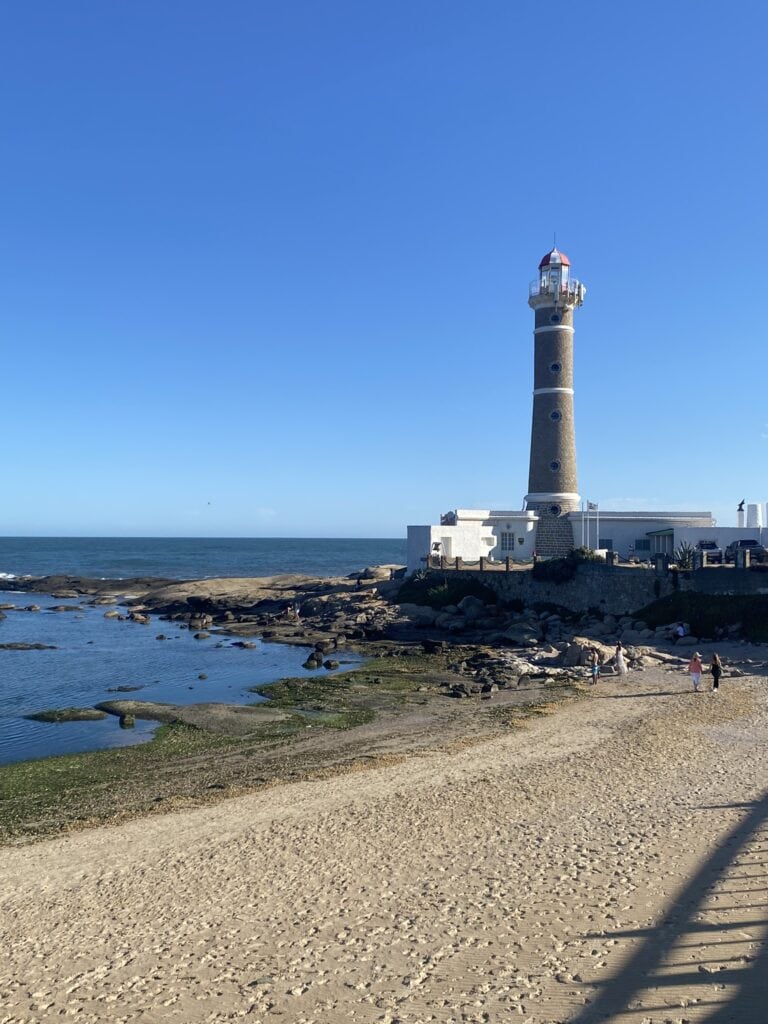

The next five nights we spent exploring Uruguay’s white sand beaches that seem to stretch into oblivion. Starting in Jose Ignacio, nick-named the Hamptons of South America, we strolled by the lighthouse past high-end clothing boutiques, art galleries, chic coffee shops and farm to table dining. Several gated communities have beach service for their guests but there is plenty of space for all types of beach goers. Surfing lessons can be purchased as well as boards rented.
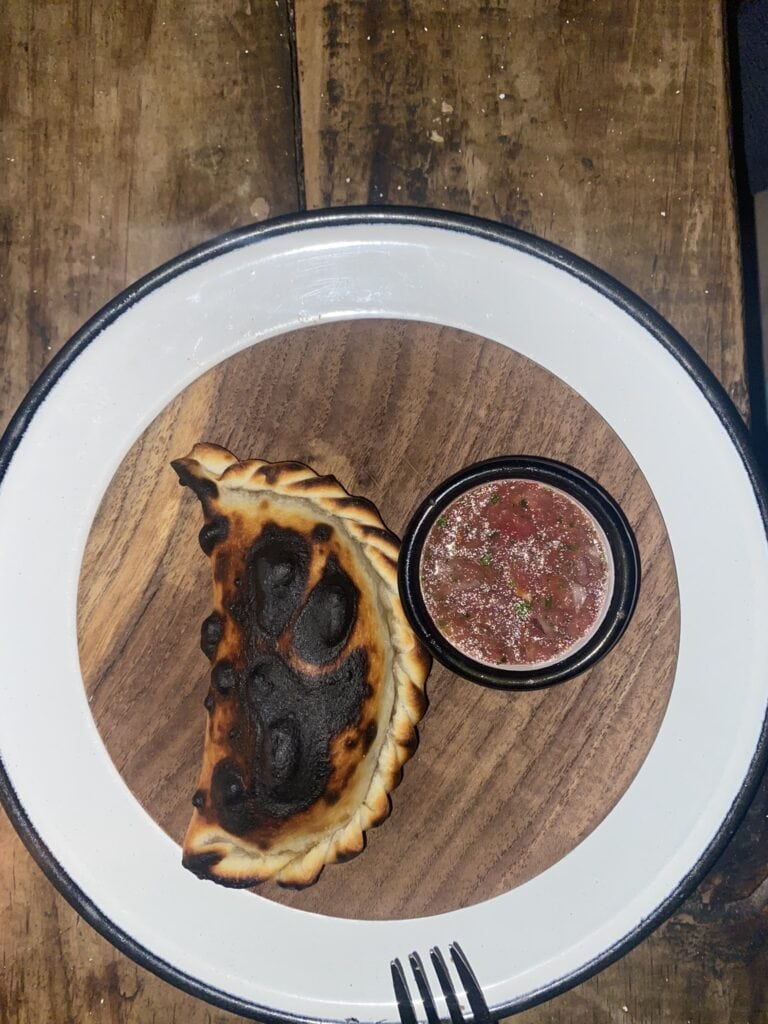
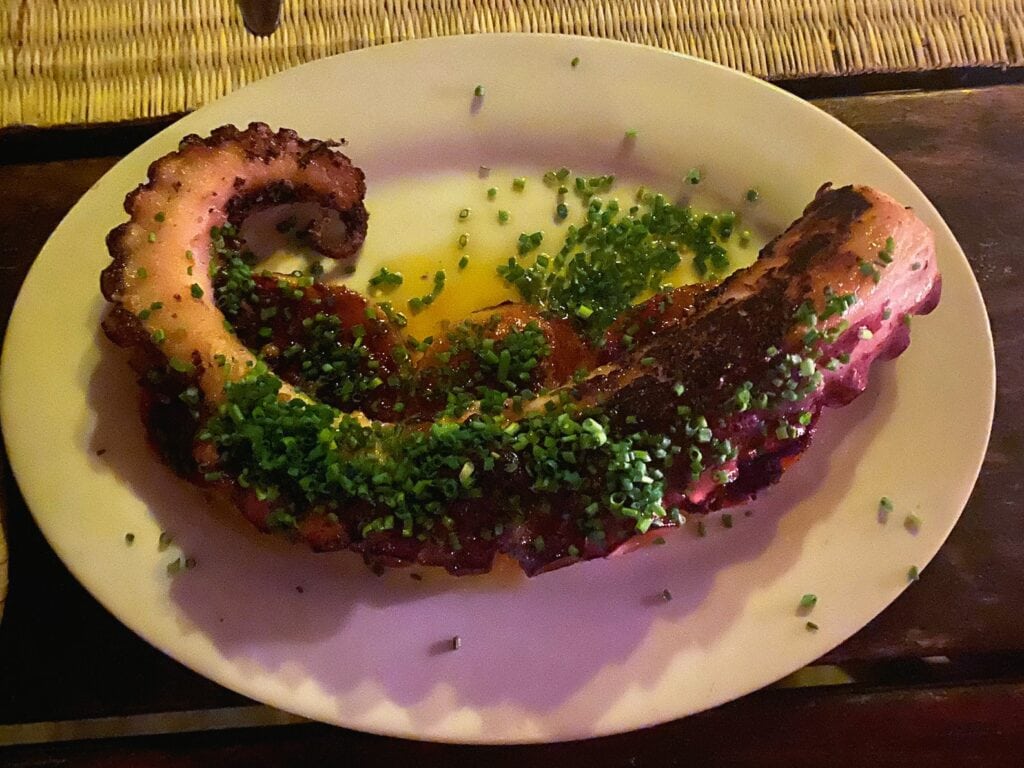
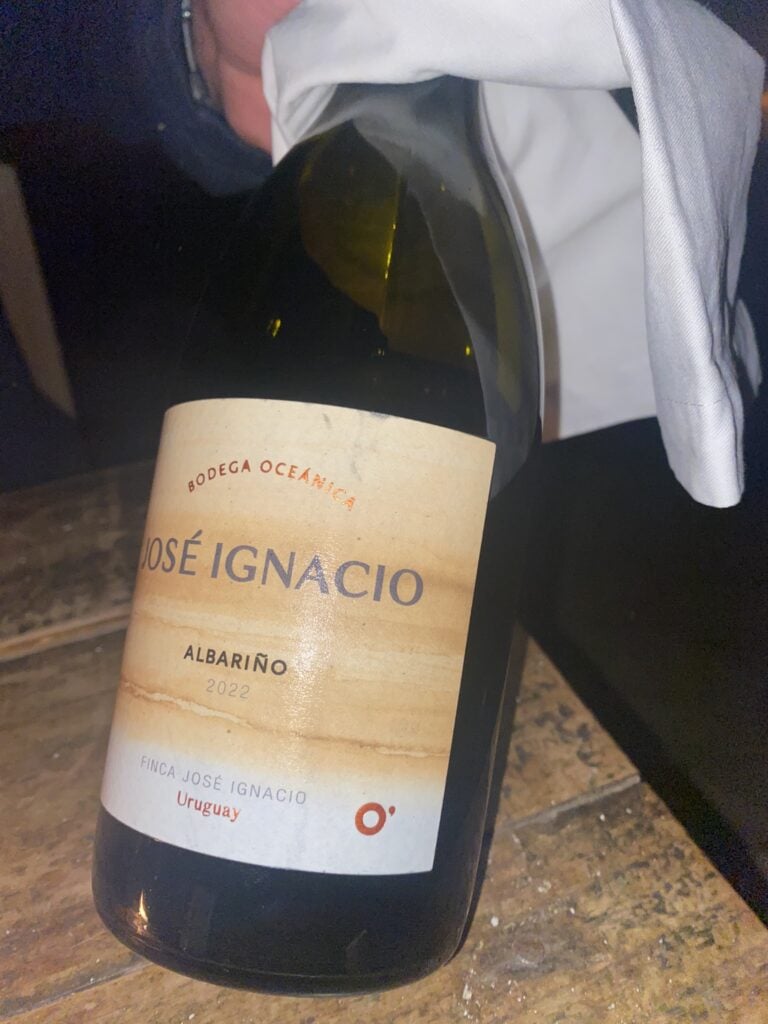
Beachfront La Huella is the most popular restaurant there and rapidly recruited us into their fan club with its unique cocktails, skirt steak, and Corvina sea bass. Set among tall pines, Marismo offered al fresco dining on wooden tables sunk in sand around a bonfire. We dined on grilled octopus, lamb empanadas, and grilled chicken paired with a Bodega Oceanica Albarino. Reservations for both are highly recommended.
Further up the coast we took a detour to the famous Cabo Polonio via double decker 4×4 trucks. This artist colony and refuge uses generators only and there are no roads. A huge protected sea lion and fur seal colony inhabits the rocky shore point encircling the lighthouse and small shops offer everything from legal marijuana to incense and odd souvenirs. A handful of restaurants and hostels are available as well if you really want to get off the grid.
Punta Del Diablo
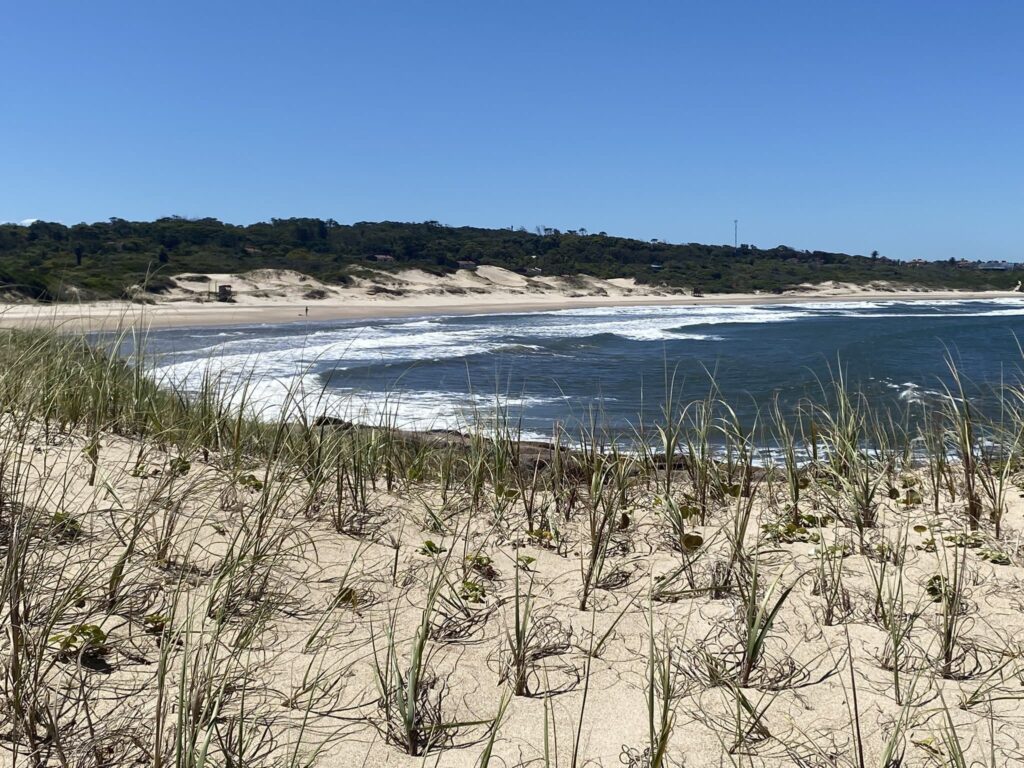
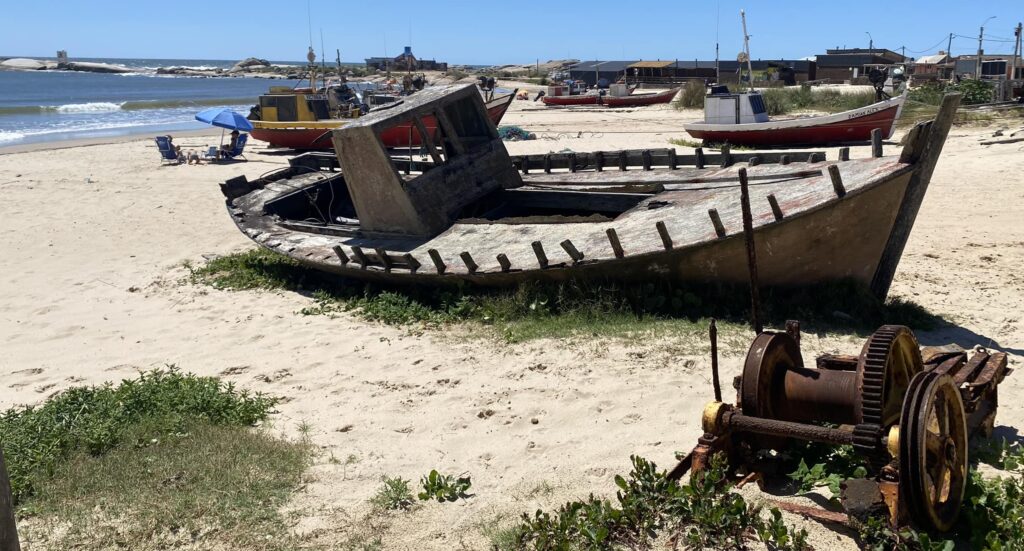
Onward towards the Brazilian border we stopped in Punta Del Diablo, a quaint fishing village with huge sand dunes and infinite beaches. Il Tano Suites run by two locals who spent fifteen years in Italy serve up delicious home-made pasta and their cozy suites are all named after Italian towns. Mini-chalets and cabanas litter the town, mostly catering to Brazilians who summer from December-February. Nearby national park Santa Teresa is a must see with its wooded forests, palm trees, birdlife, and golden beaches peppered with lime-colored sea grass. Formerly, Fortaleza Santa Teresa, there remains a limited military presence but nothing that will interfere with your surfing and spectacular camp sites.
Practical Note: If you want to shop duty free, you can drive another 30 km to the border of Brazil. There are two large boulevards that run parallel to each other sporting pharmacies, electronics and several other items duty free. Also note that both ferries running between Argentina and Uruguay have duty free shops on board for that last minute bottle of Champagne or fois gras.
La Barra
Our last stop along the coast was La Barra which is located in the south. Traffic gave away our proximity to the urban sprawl of South America’s most popular beach resort, Punta del Este. A cute surf town that donned several art and design galleries, La Barra is also near the outdoor museum, Pablo Atchugarry Foundation. This 15-hectare park displays the namesakes’ sculptures as well as other international artists and their modern installations of metal, concrete and marble.
Our Final Stop In Montevideo
We concluded our Uruguayan excursion in Montevideo, complete with shopping at local designer boutiques, a stopover at Montevideo Wine Experience where we sipped on an unfiltered Viognier, and finally an outstanding dinner at Es Mercat. Montevideo hosts a plethora of tourists sites but do not miss the Central Market for last minute shopping and the numerous Parilla stalls to choose from. My mouth is still watering from the morcillo (blood sausage) and fried provolone.
The Buquebus ferry transported us out of dreamy Uruguay and back to Buenos Aires the next day. I slumbered in the comfy seats dreaming of the mouthwatering grilled duck at Es Mercat and counting the days until I return to the picturesque coast of this friendly and gastronomic paradise. Hasta Luego Uruguay!





